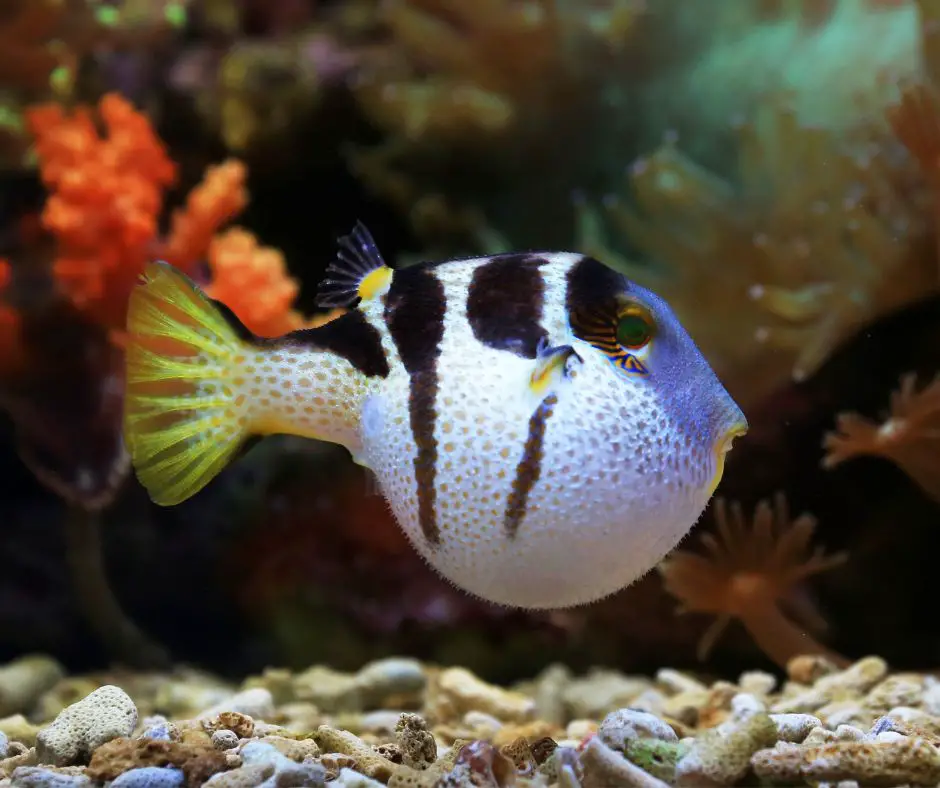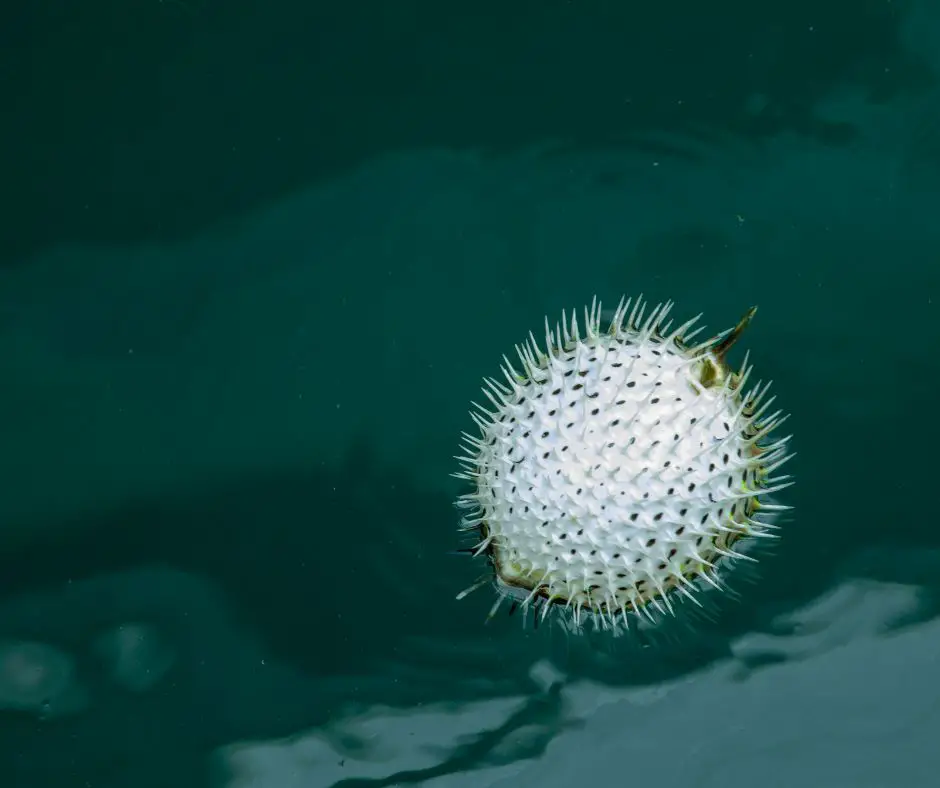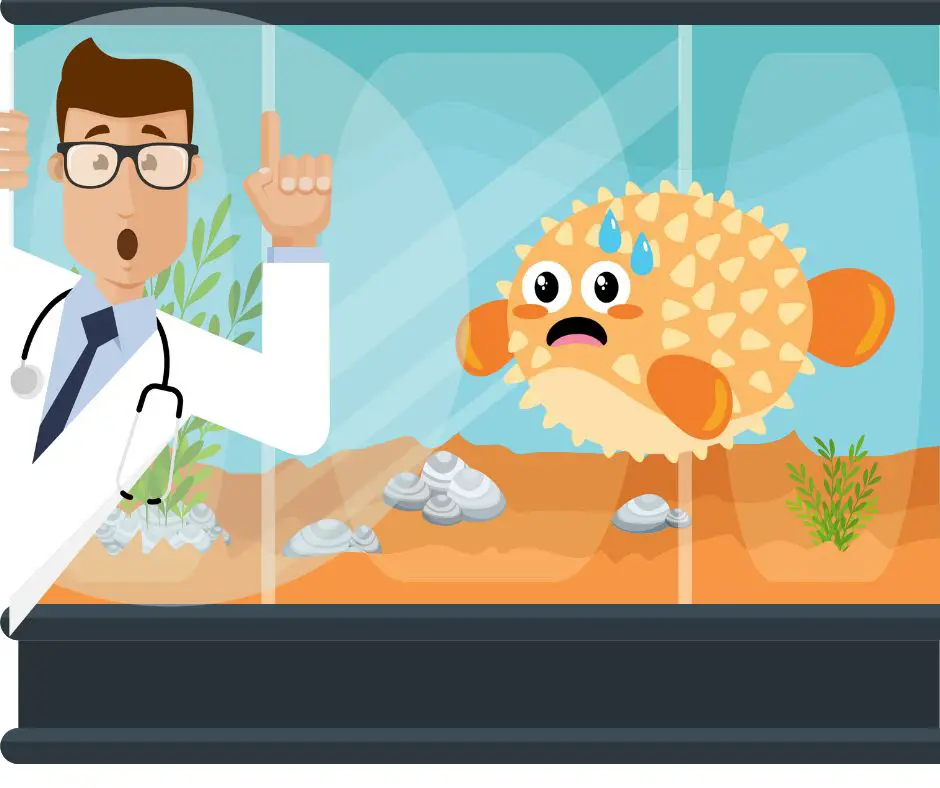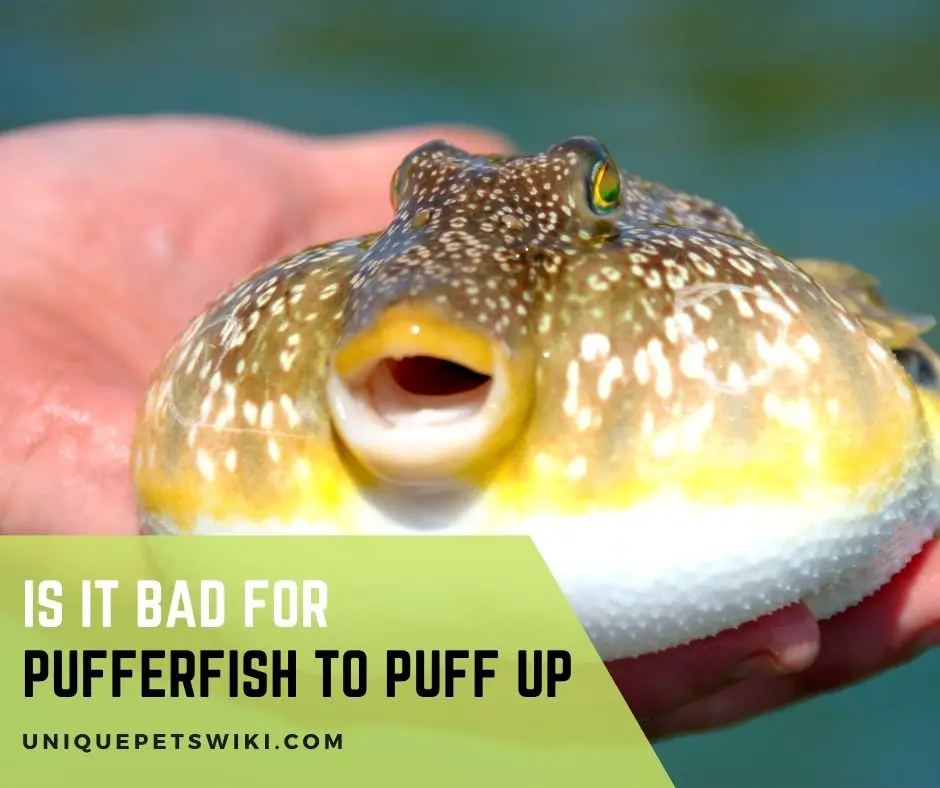Is it bad for pufferfish to puff up? A puffed pufferfish is visually stunning but, at the same time, alarming.
Puffing makes these fish exert very much pressure on the body, and many people who see them fear they will blow up. When pufferfish sense danger, they respond quickly before predators snag them.
By this, we know that puffing makes these fishes invulnerable to many predators, but are puffed puffers in danger? To know if your fish is safe puffed up or whether you should help it deflate, read through our article.
Contents
Is It Bad for Pufferfish to Puff Up?
Yes, puffing up can be hazardous for pufferfish. It’s bad because the body is forced to accommodate considerable pressure as the fish inflates itself, sometimes leading to death.
The fish appears extremely bigger than usual after inflating, becoming unattractive to any predator pursuing them.
The puffer will succeed in intimidating its predator but eventually have problems deflating, especially if the pressure is too much.
So, ensuring that your pet puffer stays relaxed and does not puff up exceedingly is extremely necessary.

Why Is It Bad for Puffer Fish to Puff?
Pufferfish respond to threats by rapidly sucking water or air into their mouths and then pumping it into their stomachs. The stomach inflates like a balloon, making the skin stretched tight and firm.
The other organs of the fish become flat and pressed to the side, which brings about extreme stress for the puffer. There are cases where pufferfish die from this stress.
Furthermore, swimming becomes pretty difficult if pufferfish puff up and becomes more exposed to danger because of their immobility. The puffer may also be typically exhausted from the exertion of puffing up.
While puffing up, pufferfish release toxins from their organs. Extreme levels of this toxin and stress disturb the pufferfish profoundly.
Why Does Your Puffer Fish Puff Up?
Pufferfish puff up whenever there is some danger to their body. Their fears can stem from anything, including birds, cats, dogs, or even if your pufferfish is uncomfortable with you.
Moreover, their tankmates can stress pufferfish, especially when living with different fish species. By inflating, pufferfish become more than double their original size, purposely to scare off predators.
So, if you see your pufferfish inflating, it is basically trying to save its life. Pufferfish are sensitive to changes in their tank. They also inflate when there is less oxygen in the tank, trying to cope with their fear.
API FRESHWATER MASTER TEST KIT 800-Test
- Contains one (1) API FRESHWATER MASTER TEST KIT 800-Test Freshwater Aquarium Water Master Test Kit, including 7 bottles of testing solutions, 1 color card and 4 glass tubes with cap
- Helps monitor water quality and prevent invisible water problems that can be harmful to fish and cause fish loss
- Accurately monitors 5 most vital water parameters levels in freshwater aquariums: pH, high range pH, ammonia, nitrite, nitrate
- Designed for use in freshwater aquariums only
- Use for weekly monitoring and when water or fish problems appear
Last update on 2022-12-30 / Affiliate links / Images from Amazon Product Advertising API
What Happens if a Puffer Fish Continues to Inflates?
Pufferfish can stay in the puffing situation for 3-20 minutes. However, if inflating for a longer time, the fish is at many risks.
For instance, when inflated, pufferfish consume oxygen five times higher than their standard rate, which typically takes an average of five hours to resume normal metabolic levels. That’s exceedingly exhaustive for these little pets.
Too much air and water trapped in pufferfish stomachs can prevent them from expelling the water, which can be lethal.
Additionally, pressure in the internal organs for too long will badly affect that organ. Consequently, some organs stop working, and the affected puffers pass away.

How to Help a Pufferfish Return to Normal State
It’s advisable to leave an inflated pufferfish alone to avoid adding more stress. The more the stress, the more the pufferfish continue to inflate, which is pretty strenuous.
To help an inflated puffer, you must stop all interactions and check what is causing it stress. Check the tank, water parameters, and oxygen status in the aquarium.
If there are tankmates, confirm if they are the stressors. Pets in your home or other animals near the pufferfish could also threaten pufferfish. Identify and then adjust or eliminate the puffer stressors.
But you can use Dr Elbert‘s burping pufferfish technique, which involves holding your puffer gently in your hand and aiming it upward.
Make a circle with your thumb and first finger to necklace the mouth and eyes, to avoid being bitten.
Then, rub the fish’s belly with a finger from your other hand, stroking the belly softly. The puffer will then repuff.

Risks If You Force Pufferfish to Deflate
The pufferfish removed water from their stomach as they swallowed it, although at a slower rate.
It’s good to leave pufferfish to burp themselves because touching them by hand increases stress, and the more the inflation.
These fishes don’t pop when puffing up but expel air and water through the mouth. If you’re going to deflate pufferfish with a tool, it’s even more dangerous.
You will injure the fish causing it to die from the wound instead of the inflates. The fish may take longer to deflate, but it’s to keep your hands away.
Last words
Pufferfish swallow large volumes of water and sometimes air to inflate themselves and appear ball-like creatures. They become more than double their typical size to frighten predators.
It’s a tactic they use as their defensive mechanism. Although they will successfully scare off predators, puffed pufferfish can die because of the enormous pressure inside their bodies.
A pufferfish will return to normal after inflating after several hours. Do not help the fish burp because you can unintentionally hurt it, which can cause death.

